“Saint John the Baptist in the Wilderness” by Joshua Reynolds (1776)
Dear friends,
In the Gospel reading for the Second Sunday of Advent, we encounter John the Baptist for the first time. John is considered by many to be Jesus’s cousin, a forerunner to Jesus, who preached, prophesied and baptized prior to Jesus’s ministry beginning. John speaks about Jesus’s coming. And when Jesus is about to begin his ministry, John baptizes him, thus making explicit a new relationship between the divine and the human, indeed all of creation, and opening the way for us to relate to God in a new way. In the Gospel for this Sunday (Luke 3:1-6), we encounter John prior to Jesus’s baptism, when he is preaching about future judgment and Christ’s arrival.
I had never spent much time studying John the Baptist until I lived in London ten years ago. One year, while I served at St. Marylebone in Central London, I preached an Advent II sermon about John the Baptist, and on the reading coming up for this Sunday. As I was working with children and youth a great deal, as well as older adults who often found sensory worship helpful, I found myself using a well-known image of John as an illustration during the sermon. The image is at the top of this letter. It is a painting which hangs in The Wallace Collection in London (just down the street from St. Marylebone), and it is an image of the infant John the Baptist in the wilderness. It was painted by Joshua Reynolds in 1776.
Reynolds was famous for two distinctive forms of painting: he was known for his landscapes, and also his images of children. He had a gift for capturing certain qualities of childhood. Reynolds was often recruited to paint famous London residents’ portraits. Interestingly, he would also often be asked to paint Biblical figures, and when he did so, he would often portray them as children. Scholars have mused as to why Reynolds did this. One theory is that he was especially strong at capturing the somewhat “traditional,” innocent, wondering qualities of childhood, yet when portrayed upon a Biblical character who is known for a more fiery, adult personality, enabled the viewer to contemplate what this character may have been like in another stage of life. Indeed, when contemplating someone as fierce a preacher as John, one might wonder how this person came to be the way they are as an adult. By contemplating such a figure as if they were back in their childhood, requires the viewer to re-imagine this person’s character, purpose, and vocation; and possibly re-think their perspective of them. In the case of John, we are presented with someone who, now, thanks to Reynolds, is not only a fire and brimstone preacher and prophet, but someone who from their youngest days was called by God to serve in his name, and to usher in the Kingdom of God in the most beautiful yet striking way. Indeed, we see this in the image, with the child John, surrounded by wilderness and a lamb representing Christ, pointing to the sky, powerfully yet gently.
When we focus in on a Biblical figure, or indeed any aspect of the Bible, we are invited to consider not only them but how they impact our own lives. When I preached about John that time in London, an older woman who would often visit our parish was in the congregation. She took a copy of the picture home, and a year later, during Advent, brought the image at right, to me in a frame. It is a replica of Reynolds’s painting, but in cross-stitch, made by hand, and she presented it to me as a gift. I don’t know how long it took her to make this, especially something so startlingly accurate and clearly painstakingly created over a long time. I didn’t get the chance to ask as she dropped it off at the church quickly, and I never saw her again. Yet this image remains in Devon’s and my home (it’s in the Rectory study if you ever visit and want to see it), as a reminder as I pray daily for God’s grace amidst uncertainty; God’s patience amidst an unfolding and complex history; God’s power amidst weakness and frailty; and God’s love amidst imperfection and consequence. Engaging in such prayerful, penitent, yet joyful reflection is very much our purpose in Advent, as we look again for the one who will make all things new.
With every prayer and blessing,
Ed.
The Rev. Edward Thornley
Rector of The Episcopal Parish of St. John the Evangelist




